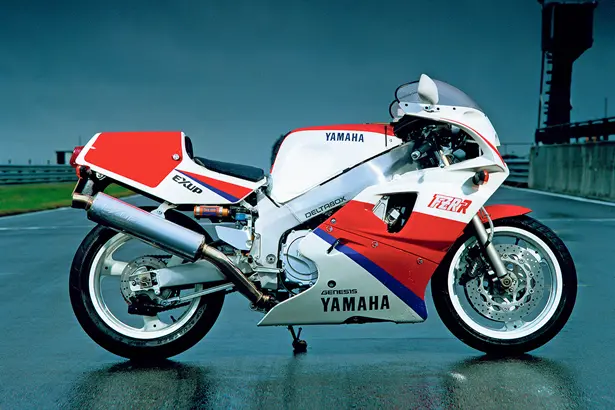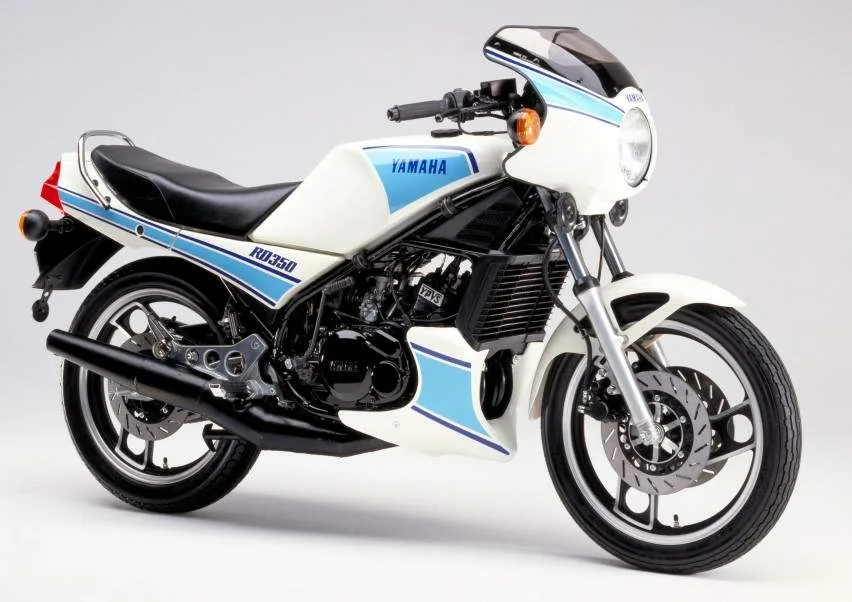Do you remember the thrill of riding a Yamaha motorcycle from the 80s? The sound of the engine revving, wind in your hair, and sense of freedom as you cruised down the road. For many, these iconic bikes hold a special place in our hearts and memories. But just how well do those memories align with reality? As someone who has been studying and researching vintage motorcycles for years, I’m excited to take you on a nostalgic journey through time as we revisit Yamaha motorcycles from the 80s. Join me as we dive into their history, design, performance, and why they still hold an enduring appeal today. So buckle up (or should I say helmet on) and let’s ride back in time together!
So, yamaha motorcycles from the 80s?
The 1980s were a decade of bold fashion choices, iconic music, and technological advancements. And for motorcycle enthusiasts, it was also a time when Yamaha Motorcycles reigned supreme.
Yamaha had already established itself as a top contender in the motorcycle industry with its innovative designs and reliable performance. But it was during the 80s that they truly solidified their place in history.
One of their most popular models from this era was the Yamaha VMAX, which made its debut in 1985. This powerful muscle bike boasted an impressive V4 engine and was known for its aggressive styling and lightning-fast speed.
Another standout from Yamaha’s lineup in the 80s was the FZR series. These sportbikes were designed for racing and quickly gained popularity among riders looking for high-performance machines. The FZR400 even won multiple championships in various racing competitions.
But it wasn’t just about speed and power with Yamaha motorcycles in the 80s. They also introduced more practical options like the XT600 dual-sport bike, perfect for both on-road and off-road adventures.
And who can forget about the iconic RD350LC? This two-stroke beauty captured hearts with its sleek design and exhilarating ride experience. It became a cult classic among motorcyclists worldwide.
Looking back at these bikes now may bring feelings of nostalgia to those who grew up riding them or dreaming of owning one someday. But even without experiencing them firsthand, their impact on motorcycle culture is undeniable.
Today, Yamaha continues to innovate and push boundaries with their motorcycles while still paying tribute to their past successes. The legacy of these iconic bikes from the 80s lives on through modern versions that incorporate advanced technology but still capture that same spirit of excitement and adventure.
So let’s take a trip down memory lane as we revisit Yamaha Motorcycles from the 80s – a decade that will always hold a special place in our hearts as riders and enthusiasts.
Exploring the Rise of Yamaha Motorcycles in the 1980s: A Historical Overview
In the vibrant tapestry of motorcycle history, the 1980s marked a significant chapter for Yamaha. Emerging from Japan’s post-war motor industry boom, Yamaha quickly became synonymous with innovation and quality. During this decade, the company unleashed a wave of groundbreaking models that not only captivated riders but also shaped market trends. The introduction of bikes like the Yamaha FZ series showcased powerful engines and sleek designs, appealing to both seasoned enthusiasts and new riders alike. These motorcycles were more than mere machines; they embodied a spirit of freedom and adventure that resonated deeply with those who craved the open road.
Amidst increasing competition, Yamaha stood out by embracing technology with open arms. They pioneered advancements such as liquid cooling systems and digital ignition, pushing boundaries in performance and reliability.
This focus on engineering excellence fostered a loyal following across various demographics. With events like AMA Superbike racing highlighting their prowess on track, Yamaha established itself as both an innovator in design and a formidable competitor in motorsports. The combination of style, speed, and cutting-edge technology solidified its place in hearts around the globe.
Ultimately, these developments transformed not just how we ride but also how we perceive motorcycles—turning them into symbols of personal expression during an era defined by change.

Read also: motorcycle gloves yamaha
Diving into Iconic Designs: Styles and Models of 1980s Yamaha Motorcycles
The 1980s were a vibrant era for Yamaha motorcycles, showcasing an impressive array of styles and models that captured the hearts of many riders. Motorcycles like the Yamaha FJ1100 became icons with their sleek bodies and powerful engines, setting new standards in performance. With its sporty design and comfortable riding position, this bike was perfect for both weekend thrill-seekers and daily commuters. Another highlight from this decade is the Yamaha YZF750R, which brought cutting-edge technology to the forefront—featuring advanced aerodynamics that made it both fast and stable on winding roads. The bright colors and bold graphics defined these machines, making them stand out at any motorcycle gathering.
As trends evolved throughout the decade, so did Yamaha’s approach to design. The introduction of models like the XJ650 Turbo showcased innovative engineering by incorporating turbocharging into their motorcycles for increased power without sacrificing efficiency. Riders enjoyed thrilling acceleration while retaining reasonable fuel consumption—a balance rarely seen before! Additionally, bikes such as the FZ600 catered to a younger audience with its approachable size yet sportier feel; it provided accessibility without compromising on excitement. This blend of style and functionality created unforgettable experiences for enthusiasts worldwide during this electrifying period in motorcycle history.
In summary:
- Sleek designs captivated riders.
- Pioneering technology shaped performance.
Analyzing the Performance and Reliability of Yamaha Motorcycles from the 1980s
Yamaha motorcycles from the 1980s hold a special place in the hearts of enthusiasts and collectors alike. During this vibrant decade, Yamaha set itself apart with innovative engineering and performance that still resonate today. The iconic Yamaha YZF series, for example, showcased liquid-cooled engines that delivered impressive power while ensuring remarkable efficiency. Riders were often captivated by the smooth handling and agile maneuverability these bikes offered on both city streets and winding country roads. Performance was paramount; models like the Yamaha FJ1100 became known for their speed and dependability, showing just how serious Yamaha was about rider experience.
When it comes to reliability, Yamaha took great care in crafting machines that could withstand rigorous use over time. Many motorcycles of this era featured robust components designed to endure various conditions—rain or shine—and regular maintenance proved quite manageable for owners. This focus on durability is evident as many vintage models are still operational decades later! Furthermore, riders appreciated how straightforward it was to find parts when needed due to a wide network of suppliers supporting older models. All these factors combined paint a picture of an era where innovation met practical excellence, making 1980s Yamaha motorcycles highly regarded treasures within the motorcycling community today.
Why Do Yamaha Bikes from the 1980s Still Hold their Charm Today?
Yamaha bikes from the 1980s continue to captivate riders and collectors alike, and it’s not hard to understand why. These machines represent a golden era of motorcycle design, characterized by sleek lines and vibrant colors that still evoke nostalgia today. The engineering behind these bikes was groundbreaking for their time, combining power with reliability in a way that was both thrilling and approachable. As you ride one of these classics, you can sense the craftsmanship; every twist of the throttle is accompanied by an exhilarating roar that reminds you of its rich history on the roads.
Moreover, there’s something undeniably special about the community surrounding vintage Yamaha bikes. Enthusiasts often gather at events to share stories of restoration projects or reminisce about rides taken long ago. This camaraderie adds another layer to their charm—it’s more than just owning a bike; it’s being part of a legacy.
Many riders appreciate how these motorcycles blend practicality with style while holding their value over time, making them attractive investments as well as personal treasures. Whether parked in your garage or cruising down highways with wind whipping through your hair, 1980s Yamaha bikes are not merely machines but portals to simpler times filled with adventure and freedom.
They remain timeless symbols in motorcycling culture.
You may also like: guitar method book 1
Yamaha Motorcycle Restorations: Keeping Nostalgia Alive through Vintage Bike Renovations
Restoring a vintage Yamaha motorcycle is not just about fixing up an old bike; it’s a journey back in time, capturing the essence of an era when motorcycles were more than mere machines. Enthusiasts often find themselves enchanted by the classic designs and intricate engineering that marked Yamaha’s iconic models. Through careful restoration, these bikes transform into stunning pieces of art that tell stories from days gone by. The process involves disassembling each component, cleaning parts meticulously, and sometimes even welding to repair rusted frames or worn-out sections. For many, it becomes a labor of love as they painstakingly search for original parts or recreate them using modern technology.
The joy doesn’t end with restoring the bike; it extends to riding it through winding roads under bright blue skies. Vintage Yamaha restorations foster camaraderie among enthusiasts who share tips, tricks, and experiences at meet-ups and online forums. These gatherings become lively celebrations filled with nostalgia where people swap tales of their journeys on two wheels—every scratch telling a tale of adventure!
- Sharing knowledge enhances skills.
- A sense of belonging flourishes within communities.
- The thrill of discovering hidden gems fuels passion.
Ultimately, every restored vintage Yamaha stands as a testament to artistry and history—a beautiful reminder that some things only get better with age.

